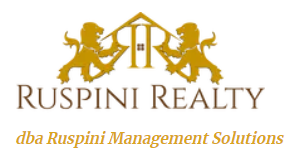6 Metrics You Must Know to Identify Great Investments
Billionaire Andrew Carnegie famously said that 90 percent of millionaires got their wealth by investing in real estate.
While this is true historically, we seem to have reached a level of interest and participation in real estate investing that we’ve never seen before. The result is an overabundance of new investors forging ahead without following proper due diligence. You can’t turn on the TV without finding a half-dozen shows on house flipping, rehabs, and income properties. You can’t go down many blocks in any city without seeing cranes and construction everywhere.
A big part of the demand is a strong economy and the persistently low mortgage interest rates that have been in place for 10 years now. Access to investment options is also at an all-time high, so you may have already jumped in or are close to it. But before doing so, I’m going to break down the metrics you need to know and use to differentiate a risky or OK deal with a GREAT one.
Our main investing strategy is of the buy and hold variety, so that’s what I am going to focus on.
A Word of Caution
Let’s talk about specifics on what to look at when evaluating return projections.
First, I never recommend doing what I call paper-napkin analysis or creating a spreadsheet on your own. While this can work for a sniff test on a property, it will not give you information you need to truly understand the short- and long-term potential and risk.
We use tools to analyze deals, which in many cases are spreadsheet-based, but they entail very complicated formulas that evaluate a deal against each and every metric we are about to dive into. A good tool to start with is the BiggerPockets Rental Property Calculator.
Before jumping in, know that some metrics can be taken alone to pre-screen a property but should be evaluated in combination during your analysis. This process is called underwriting. Also, note that each metric is intended to evaluate income, equity appreciation, or a combination of both.
Again, USE TOOLS!

Case Study
We will base the examples we use on the following property. Keep in mind, this is for easier math, so please don’t get too hung up on what is and is not included—like closing costs, ratio best practices, etc.
- 5-unit apartment building: Acquired for $600,000
- Capital invested: $150,000 (25%)
- Rents: $1,250 per unit = $6,250/mo. or $75,000/yr.
- Taxes: $5,000/yr.
- Insurance: $2,500/yr.
- All other expenses (utilities, vacancy loss, management, maintenance, etc.): $1,625 /mo.
- Mortgage (debt service): $2,500/mo.
- Total gross rents: $75,000
- Total expenses: $27,000
- Net operating income: $48,000
- Debt service: $30,000
- Cash flow: $18,000
OK, let’s jump into the six metrics you need to know to identify great deals!
1. Cash Flow
Cash Flow: Net Operating Income – Capital Expenses – Debt Service
Example: $48,000 – $5,000 – $30,000 = $13,000/yr. or $1,083/mo.
Cash flow, which is an income metric, is the difference between the gross rental income and rental property expenses, including capital expenses (big ticket improvements) and debt service (mortgage).
In the example above, we had a $5,000 improvement during the year. This could have been a roof, HVAC, etc.
The cash flow projection of a real estate investment is called pro forma cash flow. An owner with solid records and who is transparent will provide you with a trailing 12 months of income and expenses (T12), but this is not common to get with smaller properties. This projection allows you to evaluate the overall cash flow of a property for a defined period in the future.
Cash flow is probably the easiest concept to grasp but can be one of the most difficult to determine. The reason is that cash flow includes many variables that can and will change, depending on who owns or manages the property—not to mention market changes in rents.
For example, if the current owner/manager does little in the way of preventative maintenance—like regularly servicing HVAC systems or a roof—then they could have positive cash flow in one year and then little to nothing the following year, when the system breaks down and needs to be replaced and the roof needs to be replaced.
Financing terms and mortgage amount is another big one, which will most certainly be different from one owner to the next.
I often hear investors target a cash flow amount that is way too low to be supported long-term. For example, if you have a property that cash flows $100 a month under normal conditions, a broken water heater can wipe out 10 months of rent overnight! (The only exception to this rule if you are buying for equity appreciation or long-term potential.)
Our example property has a stable cash flow of $1,500 a month or $300 per unit.
Tip: Target minimum cash flow of $250 a month per unit.
2. Cap Rate
Capitalization Rate (property): Net Operating Income / Current Market Value
Example: $48,000 / $600,000 = .08 or 8%
The capitalization rate (also known as cap rate), another income metric, is used to indicate the rate of return that is expected to be generated on a real estate investment property.
First, before the cap rate gurus attack, know that there are two aspects of a cap rate. There is the market cap rate, which is based on the current prevailing market rates for similar assets and asset types.
And there is the property cap rate, which is what the performance is or expected to be of a given property. The metric we are discussing here is the property cap rate.
There is a pro forma cap rate, which is projected (by a broker for a listed property and by you during your analysis) and then the actual cap rate that the property is performing at, which can only be evaluated with actual data over a period of time.
 Although you should use it regardless of the size of a property, know that it is less indicative of the actual market value of a property in buildings with four or less units.
Although you should use it regardless of the size of a property, know that it is less indicative of the actual market value of a property in buildings with four or less units.The reason for this is that lenders consider such properties residential—as opposed to commercial—and base value primarily on sale comparables.
The property cap rate is calculated by dividing a property’s net operating income by sale or list price, acquisition price, or the current market value. You can also estimate the market value of a property by calculating the NOI against a market cap rate.
For example: $48,000 / .08 (8%) = $600,000
This ratio, expressed as a percentage, is an estimation for the potential return on an investment, but it is only useful to compare to the market and similar properties.
You always want to buy at a higher cap rate and hope to sell at a lower cap rate.
Using our example, the property was bought at an 8 cap. If three years from now nothing changes except for the market cap rate (which drops to 7 percent because of demand), then our property is now worth $48,000 / .07 = $685,714.
Again, this is for easier math. Your NOI will not likely be the same in three years.
Tip: Buy at target cap rates of 7+ (based on your pro forma analysis).

3. Cash on Cash (COC) Return
Cash on Cash Return: NOI / Total Cash Investment
Example: $18,000 / $150,000 = .12 or 12%
Cash-on-cash return, another income metric, is the ratio of annual before-tax cash flow to the total amount of cash invested, expressed as a percentage.
Cash-on-cash return is one of the most popular real estate metrics. Because we are financing the property, you might also see it referred to as levered COC return. The mortgage is the leverage.
Cash-on-cash return is an indication of whether or not financing a cash investment is a good idea. In other words, cash-on-cash return computes the rate of return on an investment property on the basis of the cash invested in it.
Tip: Buy at target COC rate of 8 percent-plus.
4. Total Return
ROI: Total NOI (over time) + Equity / Amount Invested
Example: $144,000 – $90,000 + $54,000 / $150,000 = .72 or 72% (24%/yr.)
Assumptions: 3-year hold, appreciation rate of $18K per year
Total return is the actual rate of return of an investment over a given evaluation period, which includes income and appreciation. This is an income and equity metric.
First, calculate the total NOI over the hold period and then add in the equity upon sale. You will have repaid the mortgage at this point, so the debt service is already factored in.
Divide the total net income and equity by the total investment to get the total return on investment. Keep in mind that you will obviously be projecting the equity upon sale, but it will consider principal reduction of the loan, plus the property appreciation based on the market and cap rate upon sale.
Tip: Buy at target ROI of 20 percent-plus.
5. Internal Rate of Return (IRR)
IRR: Use a calculator!
Example: Year 1 outlays = $150,000
Year 1 NOI: $13,000 ($5K for the HVAC)
Year 2: NOI = $18,000
Year 3: (Sold for $654,000 – $430,000 loan) $242,000 ($18,000 + $224,000 profit)
Combined with a sound cap rate analysis, IRR is a key metric used by investment firms to project the return of an investment. This also includes income and equity.
The equation to calculate IRR is best left to a calculator. Know that it is used to evaluate the profitability of an investment over its lifetime and is represented as the average annual return percentage. Also, know that it’s a metric that is most often used by syndication firms to convey to investors the projected return on a property after a specific hold period, generally five to seven years.
Internal rate of return uses the time value of money (TVM) to determine an investment’s performance. TVM says that a dollar today is worth more than the same dollar in the future, due to its earning capacity.
When evaluating the projected IRR of an investment, focus on the discount rate being used. It should represent the projected cap rate at the time of sale.
Suppose an investment is being marketed with a projected stabilized IRR of 20 percent using a 6 percent discount rate. If the market cap rate is 7 percent, then the projected IRR is going to be artificially inflated based on that single percentage difference.
IRR will change year over year with normal fluctuations of income and expenses.
Tip: Buy at target IRR of 15 percent-plus.

6. Equity Multiple (EM)
Equity Multiple: Total Cash Distributions / Total Equity Invested
Example: (Total cash flows from IRR calc) $273,000 / $150,000 = 1.82
Another popular real estate investing metric is equity multiple. The EM is a ratio used to help understand total cash return over the life of an investment. This is also an income and equity metric.
The EM differs from the IRR in that it does not take into account the length of the investment period or the time value of money.
Because it does not factor in discount to present value and does not take risks or other variables into account, EM should not be looked at in isolation. Paired with IRR however, you have a powerful combination of metrics.
The EM is a static factor, meaning it will not deviate year to year based on income or expense fluctuations.
Tip: Buy at target EM 1.5-plus.
Conclusion
While it may seem intimidating and confusing to analyze a property in so many ways, know that ultimately it comes down to your goals and objectives as an investor. From there, it’s a matter of identifying the metrics that give you the confidence you need to make buy or sell decisions.
The biggest key to becoming good at analysis is like anything else: Practice, practice, practice!
An easy way to do this is to search for properties for sale (try LoopNet.com), determine market rents for the area (use Rentometer.com), and then use the numbers you know and research the ones you don’t to fill in the blanks.
Accuracy and good estimates on unknown numbers is also important, so pay attention here, as well.
What you will discover is that the difference between a risky and great investment is the number of metrics that all tend to fall in line with the tips above.
If you find a property that will cash flow at a solid number, then the cap rate and total return projections should also be good.
As always, we love sharing the path to financial freedom, so if you enjoy these articles let me know by sharing to your favorite social network.
